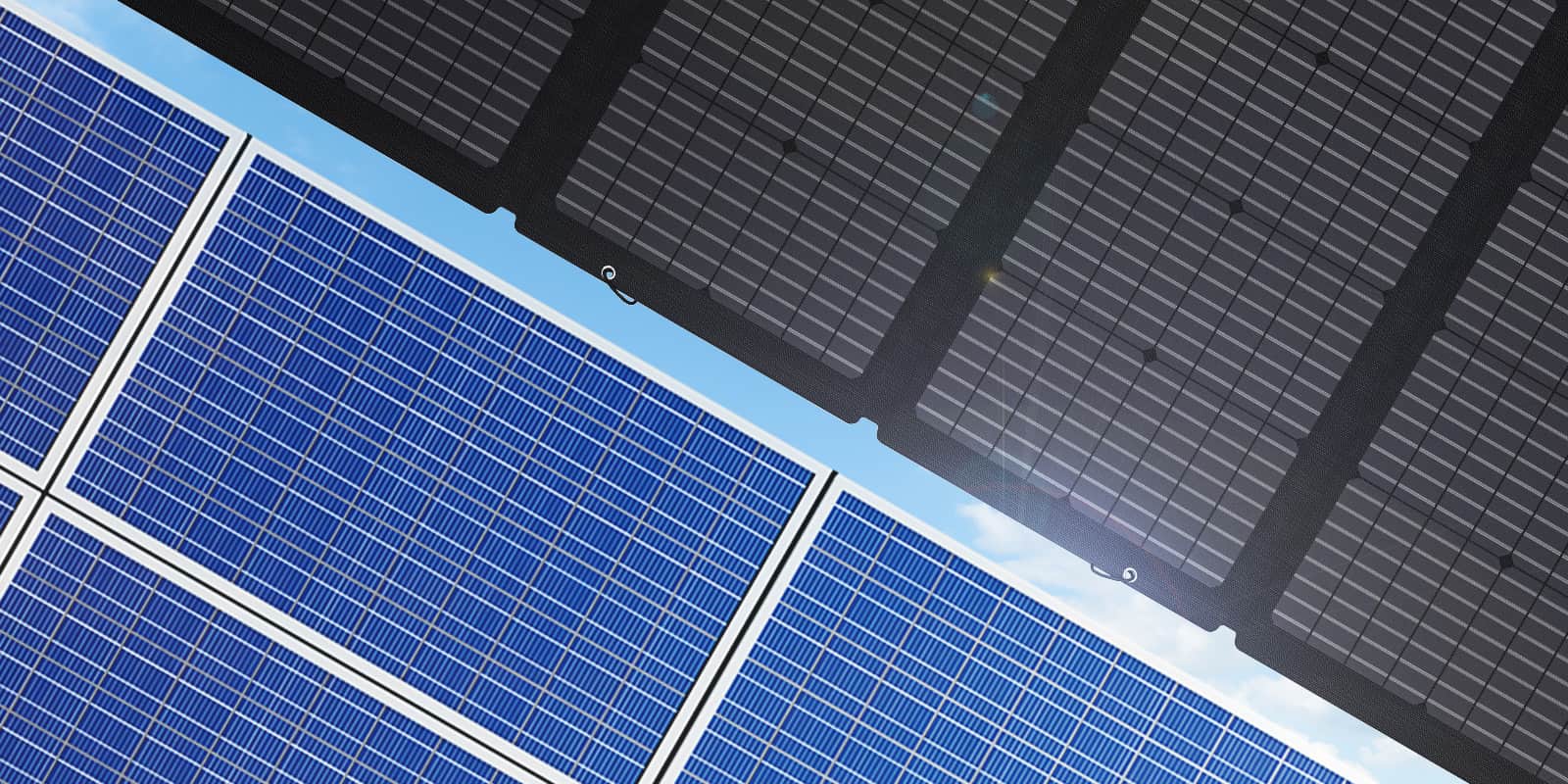On the lookout for some new panels? This post will give you a rundown of monocrystalline vs polycrystalline solar panels. By the end, you’ll know which is right for you. We’ll also recommend a few picks throughout, so your new array is worth the pay.
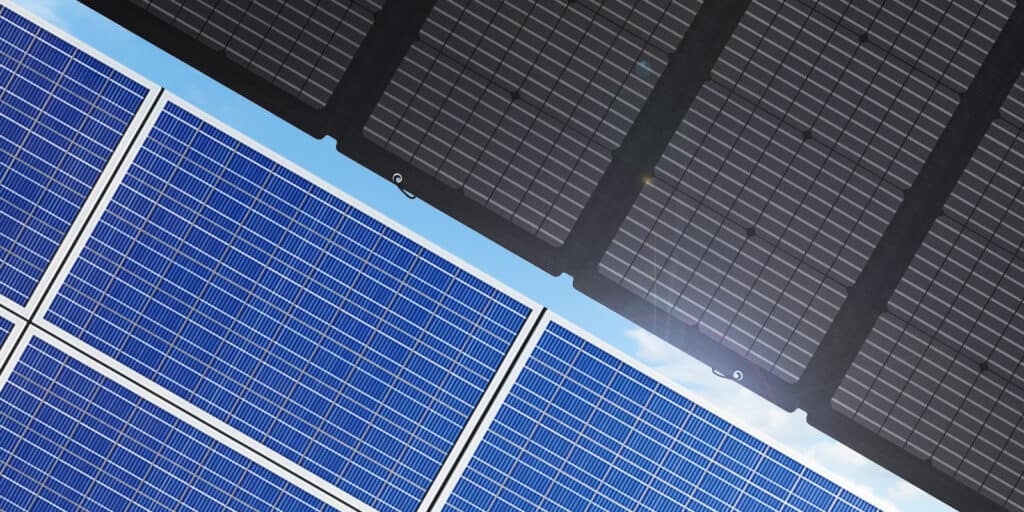
What Are Monocrystalline Solar Panels?
Monocrystalline solar panels – as the name suggests – have a single crystal per photovoltaic cell. This is down to a manufacturing process in which a single crystal of silicon is grown and processed into an ingot, which is then melted down, poured into a mold, and separated into wafers which form the monocrystalline modules. You can tell a monocrystalline panel by its black colour, uniform texture, and rounded edges per cell.
Why Is a Single Crystal Cell Design Superior?
Monocrystalline solar panels have a few advantages by having a single crystal per cell rather than many. This cell design allows for a larger surface area to capture sunlight, which means more efficiency per square meter. Pretty handy when you’re short on space. As a result, they also perform better in hot environments and work better in sub-optimal coverage, such as shaded areas.
In a nutshell, a single-crystal solar cell = more efficiency and less space.
What Are Polycrystalline Solar Panels?
On the other hand, polycrystalline solar cells are not made up of a single silicon cell; they’re made up of many, hence the name poly. Unlike monocrystalline panels, multiple crystals of silicon are melded together in the manufacturing process to form the solar cells, resulting in the end product taking up more space and sacrificing efficiency.
Do Polycrystalline Panels Have Any Advantages?
The redeeming quality of the polycrystalline pick is the manufacturing costs. The process is faster and cheaper due to mega factories’ highly-efficient processes and solar farm orders, allowing for economies of scale. In layman’s terms, the cost of production has plummeted. Although we can’t expect this to continue to the same degree due to diminishing returns in savings, it does mean polycrystalline panels are cheaper than ever.
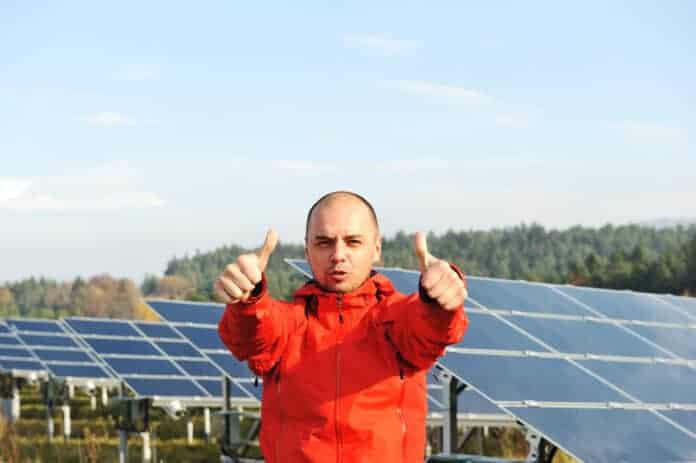
What Is the Difference Between Monocrystalline and Polycrystalline Solar Panels?
With the production methods out of the way, we can take a dive into the things that make these two types of panels different. We’ll compare efficiency, cost, portability, durability, and finally, aesthetics. Everyone wants a sleek-looking array, right?
Solar Efficiency
The efficiency of a solar panel is measured by its power output per square meter, which is called its “efficiency rating”. Monocrystalline, as eluded to earlier, wins out here. Polycrystalline averages roughly 13-16%, with monocrystalline panels topping out just over 20%. This means they can produce more electricity with the same amount of sunlight.
Winner: Monocrystalline Panels
Solar Panel Cost
Due to the production methods we’ve already covered above, polycrystalline wins out on the solar panel cost. EcoFlow’s 160W monocrystalline model balances price and functionality, being foldable, weatherproof, and comes with a carry bag for just $599.
Winner: Polycrystalline Panels
Solar Panel Portability
If you need to move your panels around a bunch, such as for camping, RV, or outdoor use, portability is king. Monocrystalline panels have a much higher efficiency per cell, which means you need fewer panels to produce the same amount of energy.
Winner: Monocrystalline Panels.
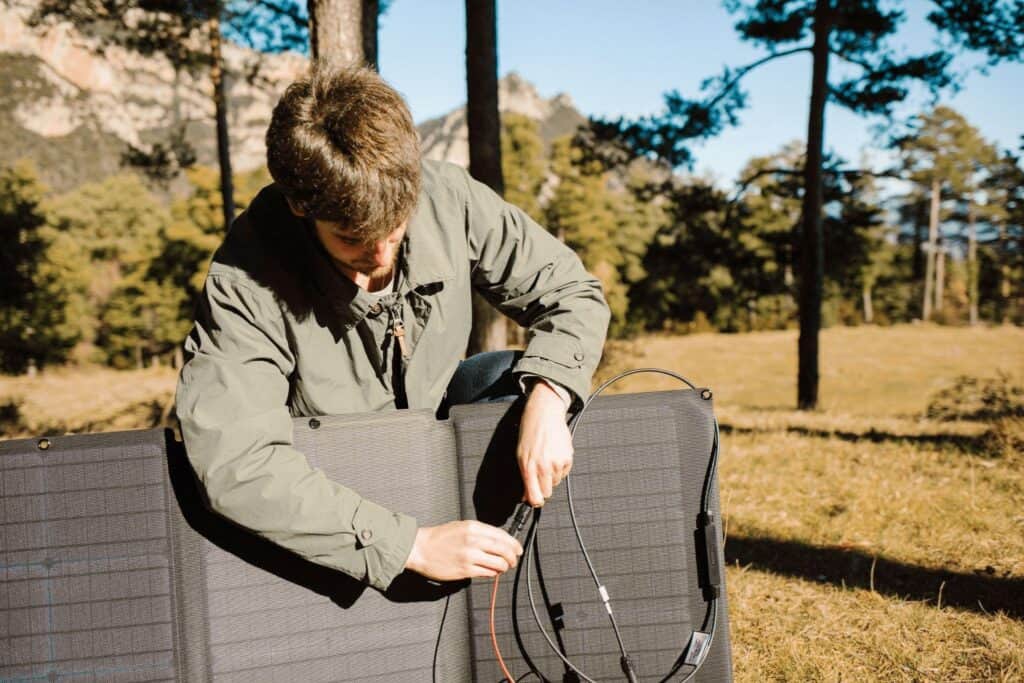
Solar Panel Durability
While both kinds are durable, it’s worth mentioning if you’re looking for a portable solar panel, it needs to be able to take a beating. EcoFlow’s are foldable solar panels, slightly flexible, and weatherproof. In fact, you can even dunk them underwater for 30 minutes, and they’ll be fine. It’s safe to say they’re ideal for taking on trips.
Winner: EcoFlow Monocrystalline Solar Panels
Solar Panel Aesthetics
While this comes down to personal preference, the blue tone of polycrystalline panels and their marbled appearance make them stand out more. Monocrystalline panels are black and have a uniform texture, so they blend in better. If you’re looking for a sleek, less intrusive appearance, monocrystalline will be your go-to.
Winner: No Clear Winner
Mono vs Poly Solar Panel Feature Comparison
| EcoFlow Monocrystalline Solar Panels | Standard Polycrystalline Solar Panels | |
| Efficiency | 22% | 13—16% |
| Portability | Foldable. Comes with a carry case. | Rigid, bulky |
| Price | Higher | Lower |
| Durability | Waterproof, durable, and slightly flexible. | Tough, rigid. |
| Aesthetics | Black, minimalistic | Blue, non-uniform |
Application Comparison: Which Type of Panel Is Best for Me?
Best Solar Panels for Camping & Trips
A portable solar panel is essential if you’re heading camping, off on a road trip, or are generally using solar power on the go. It means less to pack and less to carry. Your back will thank you later. Efficiency is also a key consideration since you can’t guarantee optimal sunlight or shadow conditions. Monocrystalline are lighter, can be smaller and also perform better in hot environments.
Foldable monocrystalline panels that come with a carry bag would be an excellent pick here.
Best Solar Panels for Home Backup
If you have a solar generator for home backup, we’d recommend opting for a monocrystalline panel. It offers more flexibility, giving you a faster charging time with less space if the grid is down. They’re also more portable which makes your life a little easier when setting them up in your garden.
Best Solar Panels for Rooftops
If you’re using a more permanent setup on your roof, then portability is likely not as important to you. For that reason, you might consider polycrystalline to save on costs. However, you would be sacrificing efficiency, meaning you’re getting less power from the same amount of space used. You’d also be sacrificing the clean, less intrusive appearance of monocrystalline. Small spaces might still favour monocrystalline rigid solar panels here, and looks might swing the balance. You can weigh up cost vs efficiency and appearance to decide which type of panel you opt for.
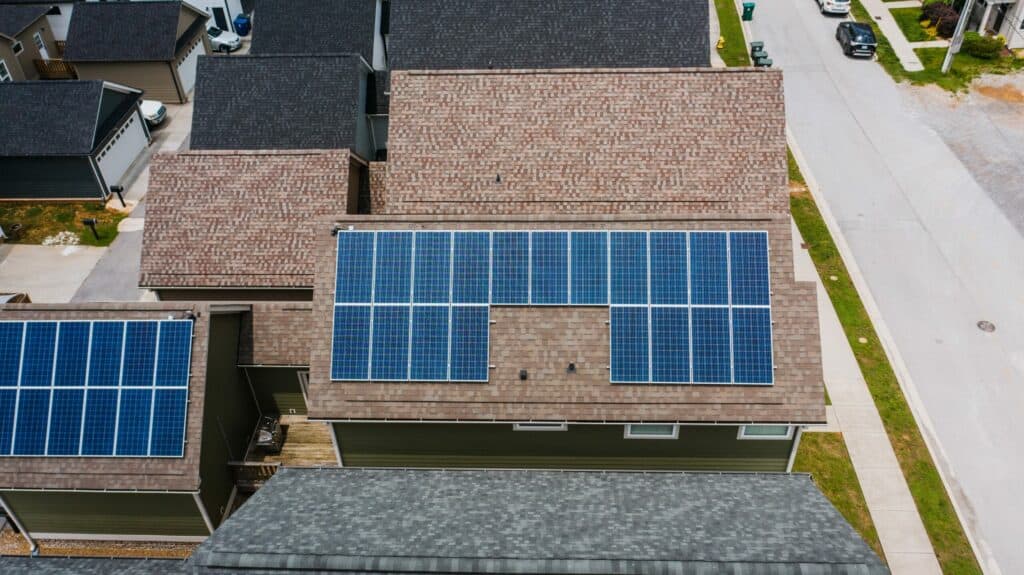
Application Solar Panel Comparison
| Best solar panel for camping | Best solar panel for home backup | Best solar panel for rooftops | |
| Monocrystalline | ✓ | ✓ | ✓ |
| Polycrystalline | ✓ |
Wrapping things up
When comparing monocrystalline vs polycrystalline solar panels, monocrystalline panels are superior in portability and efficiency, with polycrystalline panels winning out on cost. One is cheap, reliable, and does the job. The other delivers just what you want and more for a little extra cost.
EcoFlow’s Portable Solar Panels are all monocrystalline foldable solar panels, balancing cost, portability, and efficiency. They come in four sizes, so you can pick the correct wattage for your needs. Need help on how to choose a portable solar panel? Here’s an article on the topic.
Most Portable
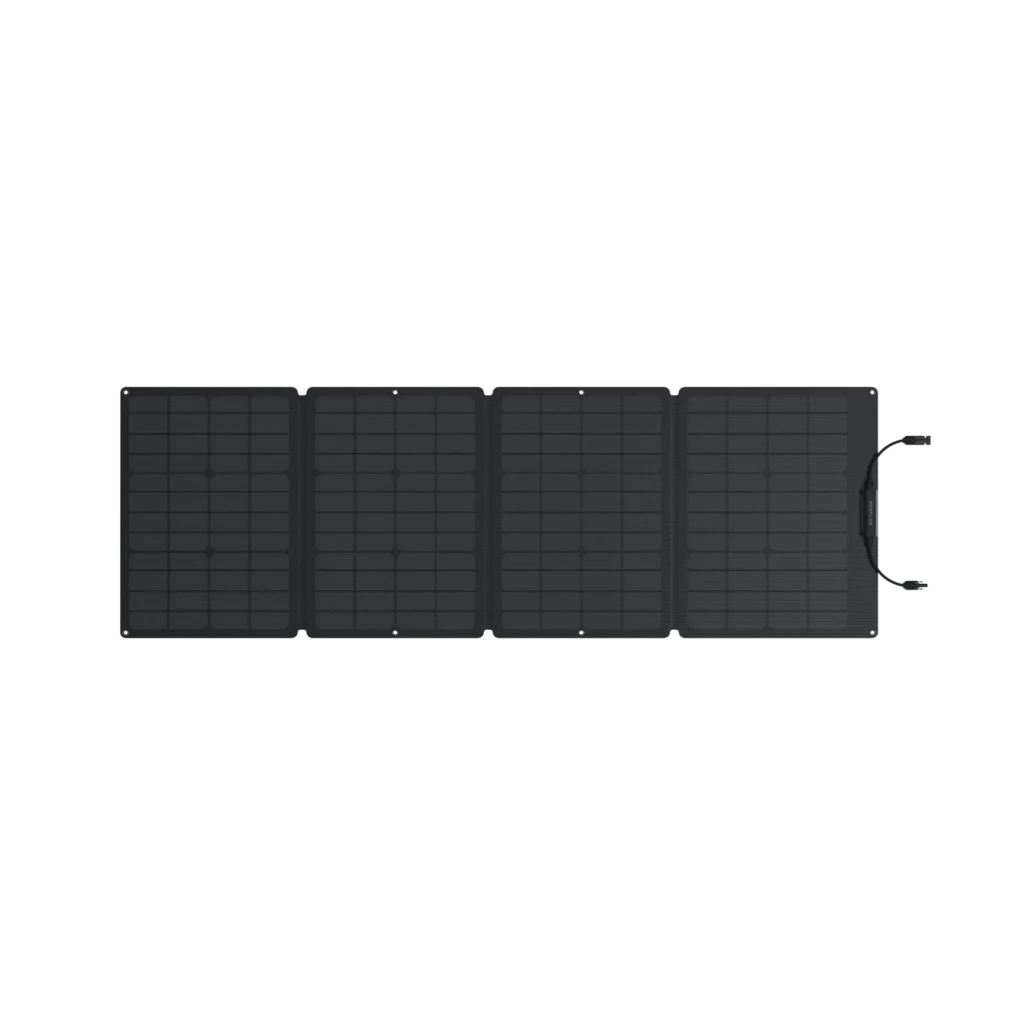
110W
| Foldable |
| Waterproof |
| 5.9 kg* |
| 110W Input |
Mid-Range
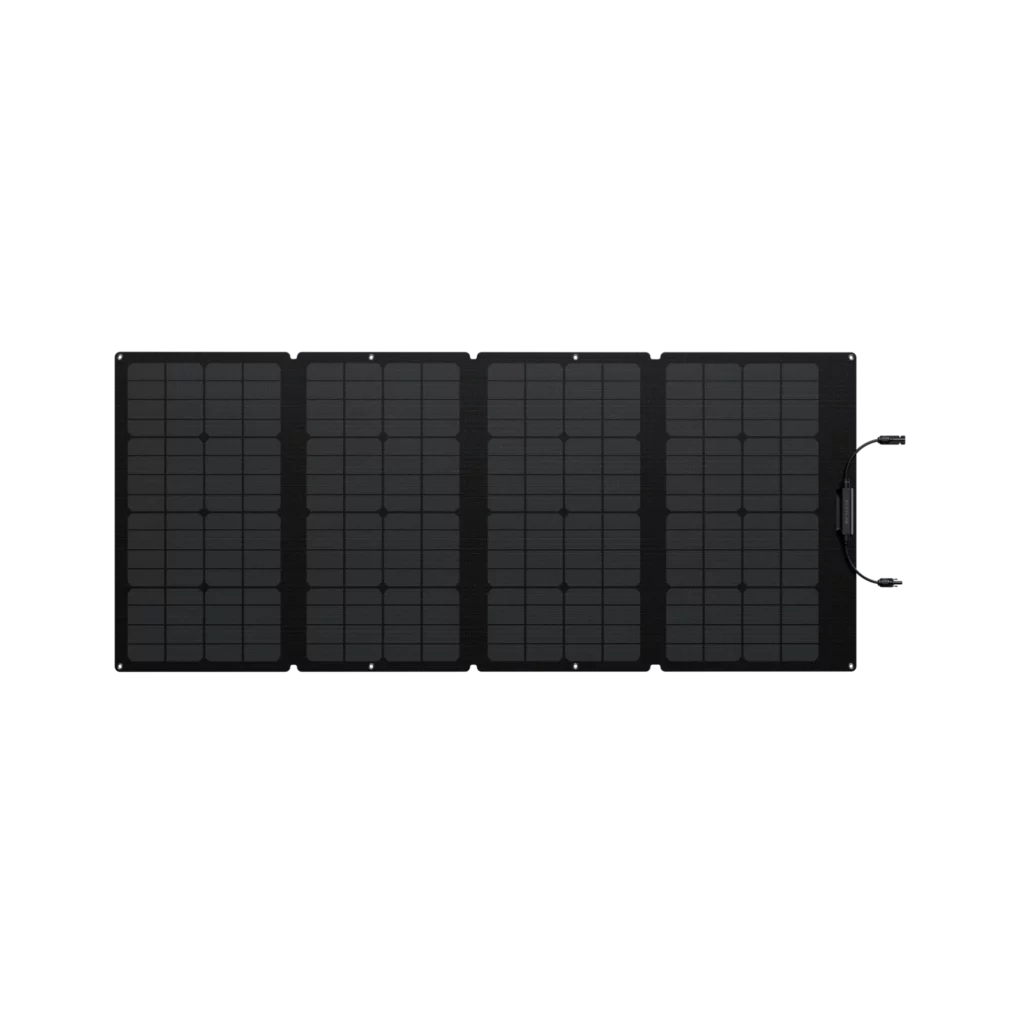
160W
| Foldable |
| Waterproof |
| 6.9 kg* |
| 160W Input |
Mid-Range
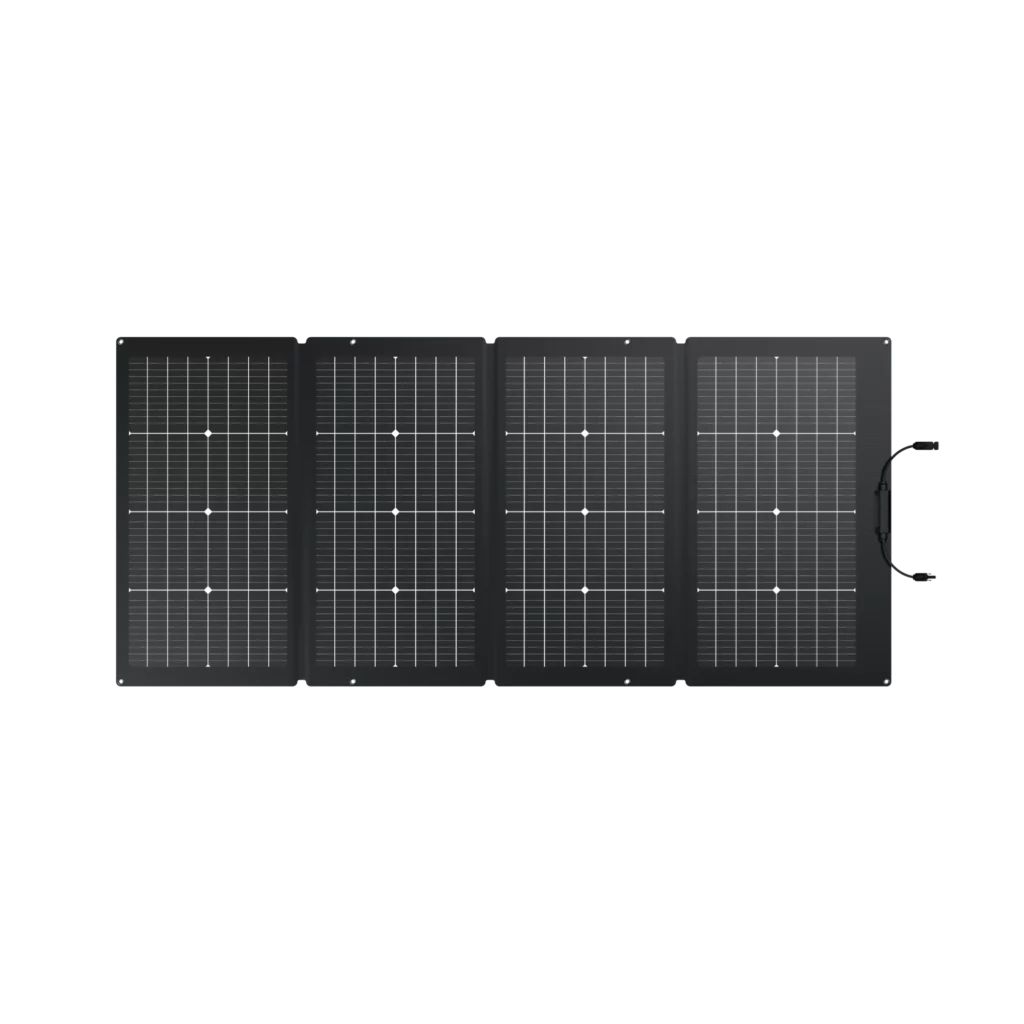
220W
| Bifacial |
| Waterproof |
| 9.5 kg* |
| 220W Input |
Highest Input
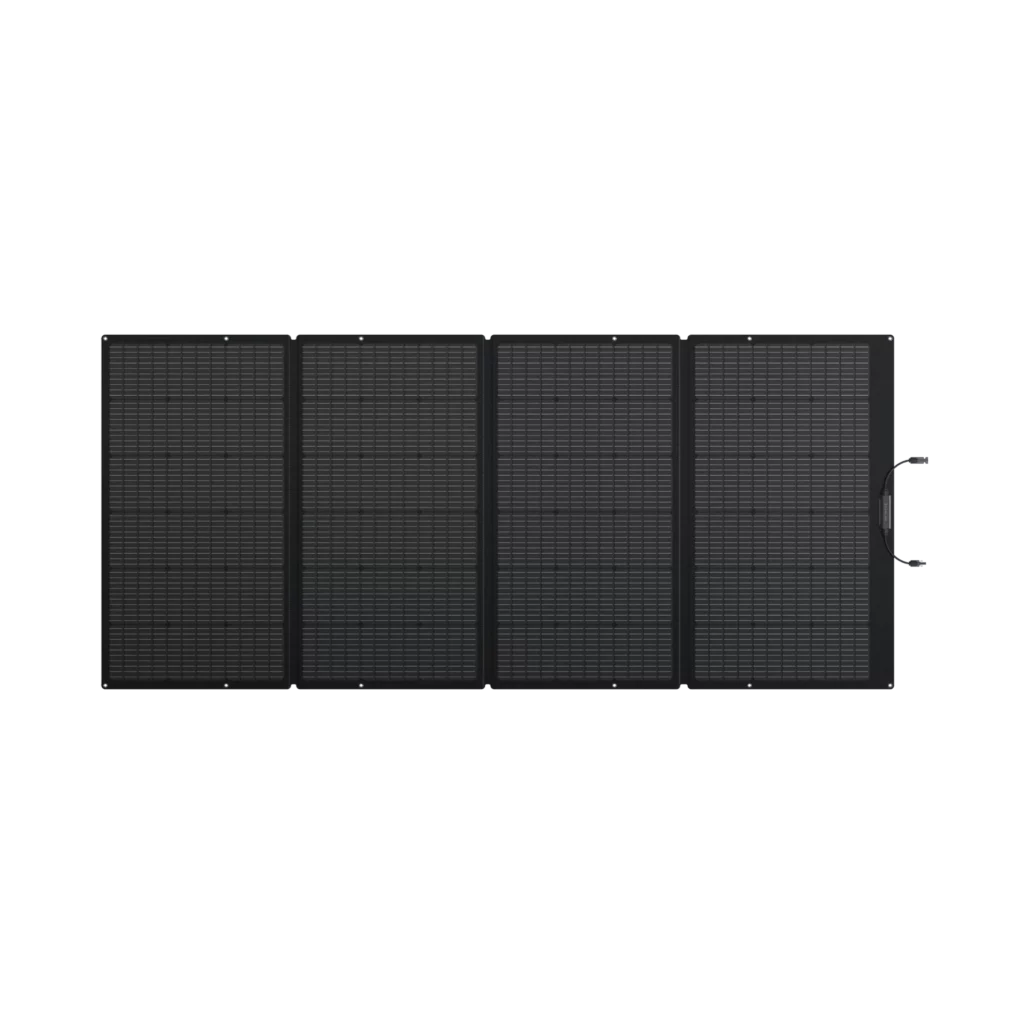
400W
| Foldable |
| Waterproof |
| 16 kg* |
| 400W Input |


